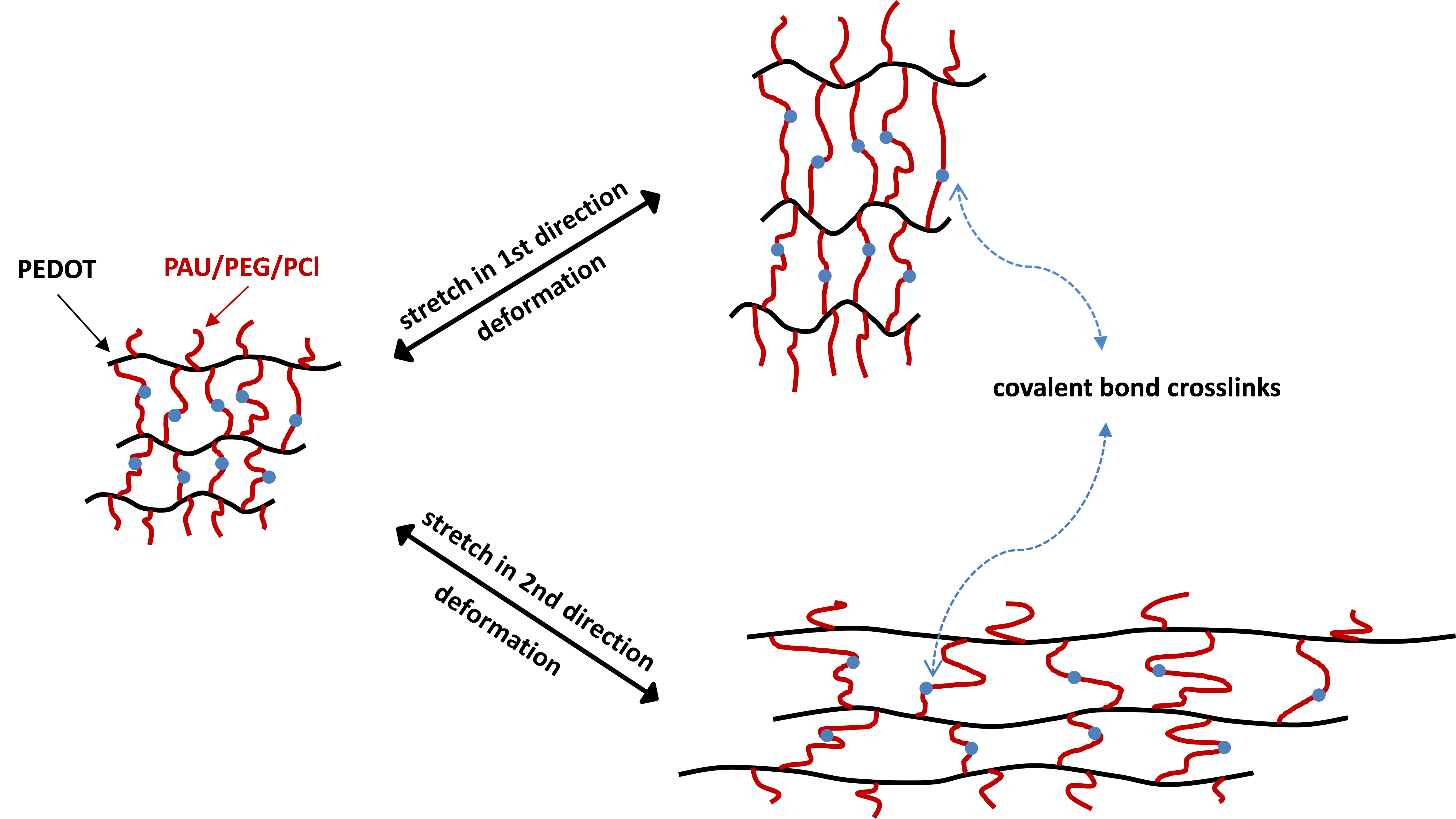Summary
The term electronic skin (or E-skin) has emerged as a term that represents stretchable, flexible and dexterous electronics that can emulate the properties of human skin. E-skin can offer biocompatibility while at the same time it has the ability to move with the human body, and portability due to due to small size of the electronic components. In addition to being elastic, human skin is also self-healing which encouraged the idea of self-healing materials in the field of organic electronics. Due to properties like as elasticity and self-healing, E-skin has potential benefits in applications such as prosthetics, systems for robotics, communication devices and personal health monitoring biosensors. However, the key limitation of such materials lies in their low self-healing efficiency and cyclability as after only a few breaking/healing cycles the conductivity decreases. Among the various available sensor materials conducting polymers (CP) are an ideal candidate owing to their electrical conductivity, large surface area and environmental stability. For the next generation of wearable biosensors, it is crucial to develop a molecular design of conjugated polymers applicable to intrinsically stretchable and healable semiconductors as current molecular tailoring of conductive polymer with high charge carrier mobility is unable to render the fabricated device simultaneously stretchable and mechanically stable. To achieve that, chemical moieties can be introduced into conducting polymers chain to promote dynamic non-covalent crosslinking of the conjugated polymers. In this molecular design the backbone is fully conjugated while the side chains contain hydrogen bonding species which enable non-covalent crosslinking between CPs resulting in flexibility. Hydrogen bonds are particularly suitable for skin-inspired electronics as these crosslinking side chains can undergo an energy dissipation mechanism through breakage of bonds when the strain is applied, while the backbone at all time retains its high charge transport abilities. After the stress is released, the bonds could be reformed to recover the initial mechanical property and self-heal.
In the SHaPes concept to develop intrinsically stretchable and healable material, molecular design of conjugated polymers based on graft copolymer concept with highly stable poly(3,4-ethyilenedioxythiophene) (PEDOT) as the backbone and different side chains is proposed. Crosslinking between PEDOT chains will be provided by non-covalent bonds, but SHaPes also aims to further progress, beyond the state of the art to prepare stretchable material by developing fully crosslinked graft copolymer where covalent bonds between PEDOT chains would be formed through side chains. This would allow even higher isotropic stretchability of such materials.

Figure 1. Mechanism for stretchability afforded by noncovalent crosslinking among side chains

Figure 2. Mechanism for stretchability afforded by covalent crosslinking among side chains
Objectives (O)
O1: To synthesize intrinsically stretchable and healable conducting polymers (CPs) by atom transfer radical polymerization (ATRP)
O2: To prepare covalently crosslinked poylmers from synthesized PEDOT graft polymers by UV curing
O3: To analyze and characterize both type of synthesized PEDOT graft polymers to establish structure-properties relationships
O4: To inkjet print synthesized PEDOT graft polymers onto elastic substrate to obtain material ready for sensor integration
 Pristupačnost
Pristupačnost